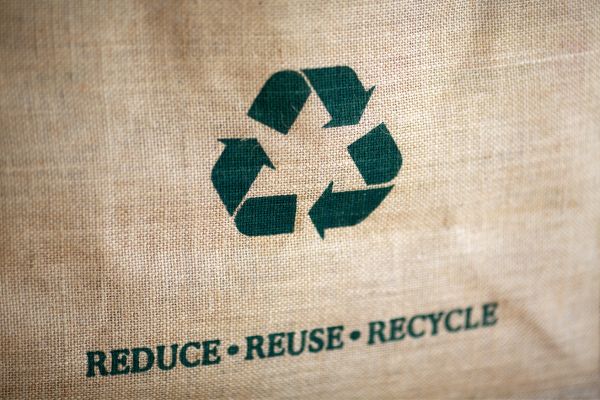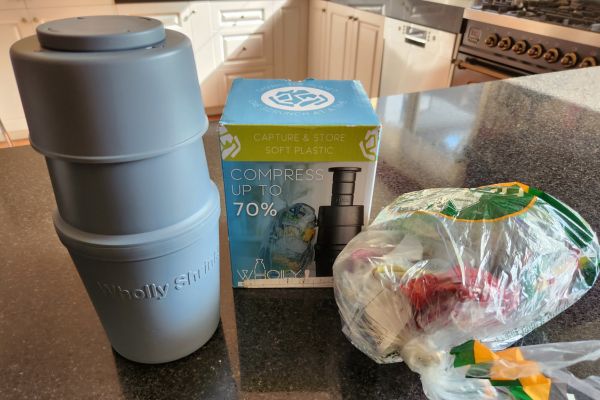RECYCLING CODES AND SYMBOLS
There are lots of things that can help us know if something can be recycled or not. As you discovered on Day 2, the most important thing is your local recycling rules. If you skipped over it or were a bit busy, I suggest you go back to that email and work through the steps, as they are very important later in the challenge when we discuss specifics.
We learned on Day 1 that most items that go in your curbside recycling bin are packaging. One of the main purposes of packaging is to give us information. Essential information like what the ingredients are, how we should use and store the products, and marketing and logos so we can recognize it next time. But labels can also include information on whether an item can be recycled or not.
This can be very helpful, but we must be cautious because not all recycling labels are reliable. The rules on what labels can be used are not standardized, so they can often be misleading. Sometimes they are only correct for specific locations or cover specialist recycling programs rather than curbside recycling.
To remove the confusion of recycling labels, here is a quick breakdown.
Mobius symbol
I am sure you will all be familiar with this universal recycling symbol with the chasing arrows. It was designed during a competition back in the 1970s for the very first Earth Day (Keep an eye out for our Earth Day activities coming up on the 22nd of April).
The problem is the use of this symbol is not regulated. It can be put onto a piece of packaging even if that packaging cannot be recycled in your local area. When you see this symbol on an item, it doesn’t help you determine if it can be placed in your local curbside recycling bin. It simply tells you that it can be recycled somewhere.
My advice is to ignore this symbol and either use the advanced labels described below or check your local rules.
Artistic license means many people create different colors and styles of the Mobius or standard recycling symbol. Here are some examples:
Tidy man symbol
This symbol is designed to remind people not to litter and to put their rubbish in the bin. Avoiding littering is really important to keep rubbish out of our waterways and parks but, this label doesn’t provide you with any information about whether the item is recyclable or not.
If you are out and about, I recommend taking your rubbish home with you to ensure it doesn’t escape into the environment and gets recycled appropriately.
Plastic resin codes
The plastic resin identification codes are often confused with a recycling symbol because they use the Mobius symbol (chasing arrows in a triangle). However, these symbols have nothing to do with whether an item can be recycled or not. They simply let you know the type of plastic the item is made from. For example, if there is a number 1 in the chasing arrows, this means the item is made from Polyethylene terephthalate (PET or PETE).
However, we can use these symbols to help us work out if an item is recyclable. I’ll explain more on Day 9 when we talk about recycling plastic.
Just remember, if you see a number inside the chasing arrows symbol like this one, it isn’t guaranteed that the item can be recycled.
Recycled content labels
Many new symbols are coming out to represent the use of recycled content. These commonly use the Mobius symbol in reverse, in other words, a white symbol inside a black circle, but not always. Sometimes there will also be a number or percentage inside or below the symbol.
This symbol represents that the item has recycled content and doesn’t give you any information on whether it can be recycled. It does help us know that we are buying recycled products and supporting the industry.
Advanced recycling labels
Luckily there is a better option for recycling. Depending on where you live, you may have seen more advanced labeling on packaging. These labels have been introduced in the last 5 to 10 years, providing much clearer and more useful information. In the USA and Canada, you can refer to the How2Recycle label, in the UK, it’s the On-Pack Recycling Label (OPRL), and in Australia and New Zealand, it’s the Australasian Recycling Label (ARL).
The most useful aspect is that these labels break down the packaging into individual components and tell you what to do with each one. For example, if you have a cereal box, there will be one label for the paperboard box and one for the plastic bag inside the box. Each material is recycled differently. The outer box can be placed straight into your curbside bin in most places, whereas the inner plastic bag can be recycled at store drop-off locations. The labels even give you tips on cleaning the item or other special instructions like flattening cardboard.
You can learn more about these labels by clicking on the link or your country above or read more in How to Recycle: Recycling Symbols and Meanings.
Below is an example of the how2recycle for the United States and Canada.
Labels can be helpful, but we must use them cautiously and always refer back to our local rules. If you didn’t have time to complete the task for Lesson 2, finding your local rules, I recommend you head back and complete it.
Here is a one-page summary sheet to help you remember the labels. Choose the one for your local region:
- Recycling Labels – USA & Canada.pdf
- Recycling Labels – UK.pdf
- Recycling Labels – Australia & New Zealand.pdf
TODAY’S TASK
Take a look in your pantry and see what sort of recycling labels the food and other items have on them. See if you can identify any of the labels described above. In particular, keep an eye out for products that display advanced recycling labels. I have provided a summary sheet of these labels for you to download and print out, which will help you review the labels.
The next time you do your regular supermarket shop, take a little extra time to look at the recycling information on the products as you place them in your trolley. If you see a product using the advanced recycling label, consider choosing that product over another. It will help you recycle better but also offers support to the companies that are making an effort to provide the right information on their packaging.
Join the Facebook Group
In Lesson 4, we explain the different types of contamination and what you can do to minimize them.
Let’s conquer curbside recycling together.
You can jump to any of the other lessons below:
- Conquer Curbside Recycling Challenge Page
- Lesson 1 – WHAT IS RECYCLING AND WHY IS IT IMPORTANT
- Lesson 2 – FINDING YOUR RECYCLING RULES
- Lesson 3 – RECYCLING CODES AND SYMBOLS
- Lesson 4 – REDUCING CURBSIDE RECYCLING CONTAMINATION
- Lesson 5 – GETTING FAMILIAR WITH SOME COMMON RULES
- Lesson 6 – RECYCLING GLASS IN CURBSIDE BINS
- Lesson 7 – RECYCLING PAPER IN CURBSIDE BINS
- Lesson 8 – RECYCLING METAL IN CURBSIDE BINS
- Lesson 9 – RECYCLING PLASTIC IN CURBSIDE BINS
- Lesson 10 – RECYCLING CURBSIDE BINS OVERVIEW
If you liked this challenge, then you are definitely going to like my book “Recycling for dummies”. It has 384 pages filled with knowledgeable and actionable content for you to become a better recycler. Find out more here.















